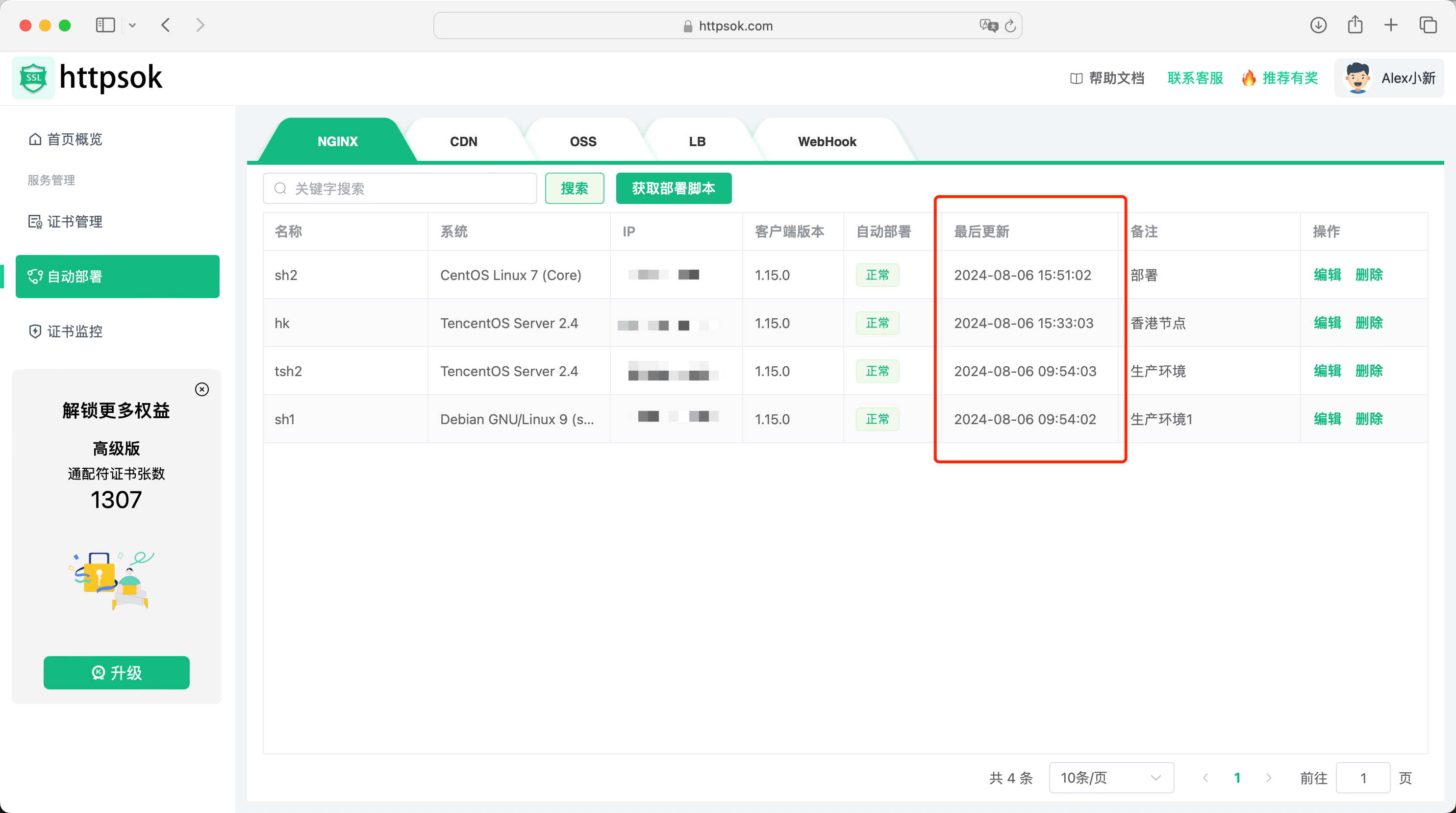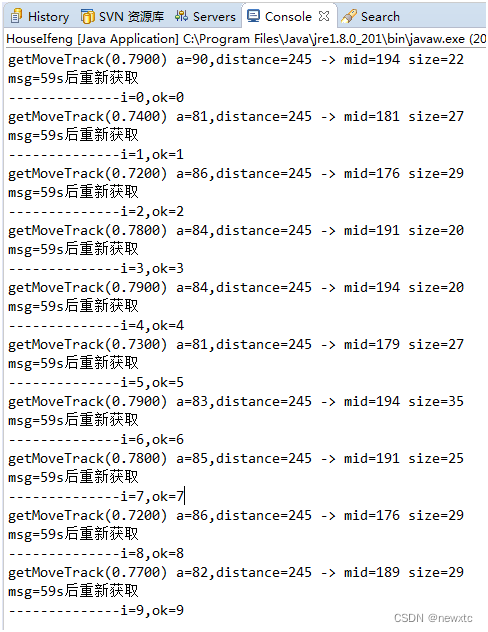文章目录
- 1. 类的默认成员函数
- 2. 构造函数
- 3. 析构函数
- 4. 拷贝构造函数
- 5. 赋值运算符重载
- 5.1 运算符重载
- 5.2 赋值运算符重载
- 5.3 日期类实现
- 6. 取地址运算符重载
- 6.1 const成员函数
- 6.2 取地址运算符重载
- 总结
1. 类的默认成员函数
默认成员函数就是用户没有显式实现,编译器会⾃动⽣成的成员函数称为默认成员函数。⼀个类,我
们不写的情况下编译器会默认⽣成以下6个默认成员函数,需要注意的是这6个中最重要的是前4个,最后两个取地址重载不重要,我们稍微了解⼀下即可。其次就是C++11以后还会增加两个默认成员函数,移动构造和移动赋值。默认成员函数很重要,也⽐较复杂,我们要从两个方面去学习:
(1).第⼀:我们不写时,编译器默认⽣成的函数行为是什么,是否满足我们的需求。
(2).第⼆:编译器默认生成的函数不满足我们的需求,我们需要自己实现,那么如何自己实现?

2. 构造函数
构造函数是特殊的成员函数,需要注意的是,构造函数虽然名称叫构造,但是构造函数的主要任务并
不是开空间创建对象(我们常使用的局部对象是栈帧创建时,空间就开好了),⽽是对象实例化时初始化对象。构造函数的本质是要替代我们以前Stack和Date类中写的Init函数的功能,构造函数⾃动调⽤的特点就完美的替代的了Init。
构造函数的特点:
- 函数名与类名相同。
- 无返回值。 (返回值啥都不需要给,也不需要写void,不要纠结,C++规定如此)
- 对象实例化时系统会自动调用对应的构造函数。
- 构造函数可以重载。
- 如果类中没有显式定义构造函数,则C++编译器会⾃动⽣成⼀个⽆参的默认构造函数,⼀旦用户显式定义编译器将不再生成。
- ==(1)⽆参构造函数、(2)全缺省构造函数、(3)我们不写构造时编译器默认⽣成的构造函数,都叫做默认构造函数。但是这三个函数有且只有⼀个存在,不能同时存在。==⽆参构造函数和全缺省构造函数虽然构成函数重载,但是调用时会存在歧义。要注意很多人会认为(1)默认构造函数是编译器默认生成那个叫默认构造,实际上(2)无参构造函数、(3)全缺省构造函数也是默认构造,总结⼀下就是不传实参就可以调用的构造就叫默认构造。
- 我们不写,编译器默认生成的构造,对内置类型成员变量的初始化没有要求,也就是说是是否初始化是不确定的,看编译器。对于自定义类型成员变量,要求调用这个成员变量的默认构造函数初始化。如果这个成员变量,没有默认构造函数,那么就会报错,我们要初始化这个成员变量,需要⽤初始化列表才能解决,初始化列表。
说明:C++把类型分成内置类型(基本类型)和⾃定义类型。内置类型就是语⾔提供的原生数据类型,如:int/char/double/指针等,⾃定义类型就是我们使⽤class/struct等关键字自己定义的类型。
结论:一般情况构造函数都需要自己写,少数情况,默认生成就可以使用,比如:MyQueue。
代码中的示例和结果验证:
(1)如果留下三个构造中的第二个代参构造,第一个和第三个注释掉,详细信息错误 C2512 “Data”: 没有合适的默认构造函数可用 9_17 。


(2).如果通过无参构造函数创建对象时,对象后面不用跟括号,否则编译器无法编译.区分这里是函数声明还是实例化对象 eg:Data d1() //函数声明也可以这样写,有歧义.

(3)如果类中没有显式定义构造函数,则C++编译器会⾃动⽣成⼀个⽆参的默认构造函数,⼀旦用户显式定义编译器将不再生成。
class Data
{
public:
void print()
{
cout << _year << "/" << _month << "/" << _day << endl;
}
private://先写这个私密的这个对象初始化
int _year;
int _month;
int _day;
};
int main()
{
Data d1;
d1.print();
return 0;
}

(4 详细信息错误 C2512 “Data”: 没有合适的默认构造函数可用 9_17 D:\c++\c-beginners-guide\9_17\9_17\test.cpp


代码源码演示:
#define _CRT_SECURE_NO_WARNINGS 1
#include<iostream>
using namespace std;
class Data
{
public:
//1.无参构造函数
Data()
{
_year = 1;
_month = 1;
_day = 1;
}
//2.带参构造函数
Data(int year,int month,int day)
{
_year = year;
_month = month;
_day = day;
}
//3.全缺省构造函数
/*Data(int year = 1,int month = 1,int day =1)
{
_year = year;
_month = month;
_day = day;
}*/
void print()
{
cout << _year << "/" << _month << "/" << _day << endl;
}
private://先写这个私密的这个对象初始化
int _year;
int _month;
int _day;
};
int main()
{
//如果留下三个构造中的第二个代参构造,第一个和第三个注释掉
//错误 C2512 “Data” : 没有合适的默认构造函数可用 9_17 D : \c++\c - beginners - guide\9_17\9_17\test.cpp 98
Data d1; //调用默认构造函数 (不传实参的就是默认构造函数)
Data d2(2024, 9, 18);//调用带参的构造函数
//注意:如果通过无参构造函数创建对象时,对象后面不用跟括号,否则编译器无法编译
//区分这里是函数声明还是实例化对象 eg:Data d1() //函数声明也可以这样写,有歧义
//warning C4930: “Date d3(void)”: 未调⽤原型函数(是否是有意⽤变量定义的?)
//Data d3(void);
Data d3();
d1.print();
d2.print();
return 0;
}
(4).两个stack实现队列
#define _CRT_SECURE_NO_WARNINGS 1
#include <iostream>
using namespace std;
typedef int STDataType;
class Stack
{
public:
Stack(int n = 4)
{
_a = (STDataType*)malloc(sizeof(STDataType) * n);
if (_a == NULL)
{
perror("malloc fail!");
return;
}
_capacity = n;
_top = 0;
}
//....
private:
STDataType* _a;
size_t _capacity;
size_t _top;
};
//两个stack实现队列
class Mqueue
{
public:
//编译器默认生成MyQueue的构造函数调用了Stack的构造,完成两个成员的初始化
private:
Stack pushst;
Stack popst;
};
int main()
{
Mqueue mq;
return 0;
}
3. 析构函数
析构函数与构造函数功能相反,析构函数不是完成对对象本身的销毁,⽐如局部对象是存在栈帧的,函数结束栈帧销毁,他就释放了,不需要我们管,C++规定对象在销毁时会自动调⽤析构函数,完成对象中资源的清理释放⼯作。析构函数的功能类比Stack实现的Destroy功能(可以参考数据结构(初阶)satck),而像Date没有Destroy,其实就是没有资源需要释放,所以严格说Date是不需要析构函数的。
析构函数的特点:
- 析构函数名是在类名前加上字符 ~。
- ⽆参数⽆返回值。 (这里跟构造类似,也不需要加void)
- ⼀个类只能有⼀个析构函数。若未显式定义,系统会⾃动⽣成默认的析构函数。
~Stack()//析构 类名前面加~
{
cout << "~stack()" << endl;
free(_a);
_a = NULL;
_top = _capacity = 0;
}

- 对象⽣命周期结束时,系统会自动调用析构函数。
- 跟构造函数类似,我们不写编译器⾃动⽣成的析构函数对内置类型成员不做处理,⾃定类型成员会调⽤他的析构函数。
- 还需要注意的是我们显示写析构函数,对于⾃定义类型成员也会调用他的析构,也就是说自定义类型成员⽆论什么情况都会自动调用析构函数。
//编译器默认⽣成MyQueue的析构函数调⽤了Stack的析构,释放的Stack内部的资源
// 显⽰写析构,也会⾃动调⽤Stack的析构
~Myqueue()
{}

- 如果类中没有申请资源时,析构函数可以不写,直接使⽤编译器生成的默认析构函数,如Date;如果默认⽣成的析构就可以用,也就不需要显示写析构,如MyQueue;但是有资源申请时,⼀定要自己写析构,否则会造成资源泄漏,如Stack。
- ⼀个局部域的多个对象,C++规定后定义的先析构。
总结:一般情况下显示申请资源,才需要自己实现析构,其他情况基本都不需要显示写。
#define _CRT_SECURE_NO_WARNINGS 1
#include <iostream>
using namespace std;
typedef int STDataType;
class Stack
{
public:
Stack(int n = 4)
{
_a = (STDataType*)malloc(sizeof(STDataType) * n);
if (_a == NULL)
{
perror("malloc fail!");
return;
}
_capacity = n;
_top = 0;
}
~Stack()//析构 类名前面加~
{
cout << "~stack()" << endl;
free(_a);
_a = NULL;
_top = _capacity = 0;
}
//....
private:
STDataType* _a;
size_t _capacity;
size_t _top;
};
//两个stack实现队列
class Myqueue
{
public:
//编译器默认生成MyQueue的构造函数调用了Stack的构造,完成两个成员的初始化
//编译器默认⽣成MyQueue的析构函数调⽤了Stack的析构,释放的Stack内部的资源
// 显⽰写析构,也会⾃动调⽤Stack的析构
~Myqueue()
{}
private:
Stack pushst;
Stack popst;
};
int main()
{
Myqueue mq;
return 0;
}
对比⼀下⽤C++和C实现的Stack解决之前括号匹配问题isValid,我们发现有了构造函数和析构函数确
实⽅便了很多,不会再忘记调⽤Init和Destory函数了。
部分源码:
c++版本:
#include<iostream>
using namespace std;
// ⽤最新加了构造和析构的C++版本Stack实现
bool isValid(const char* s) {
Stack st;
while (*s)
{
if (*s == '[' || *s == '(' || *s == '{')
{
st.Push(*s);
}
else
{
// 右括号⽐左括号多,数量匹配问题
if (st.Empty())
{
return false;
}
// 栈⾥⾯取左括号
char top = st.Top();
st.Pop();
// 顺序不匹配
if ((*s == ']' && top != '[')
|| (*s == '}' && top != '{')
|| (*s == ')' && top != '('))
{
return false;
}
}
++s;
}
// 栈为空,返回真,说明数量都匹配 左括号多,右括号少匹配问题
return st.Empty();
}
int main()
{
cout << isValid("[()][]")<<endl;
}
c版本:
bool isValid(const char* s) {
ST st;
STInit(&st);
while (*s)
{
// 左括号⼊栈
if (*s == '(' || *s == '[' || *s == '{')
{
STPush(&st, *s);
}
else // 右括号取栈顶左括号尝试匹配
{
if (STEmpty(&st))
{
STDestroy(&st);
return false;
}
char top = STTop(&st);
STPop(&st);
// 不匹配
if ((top == '(' && *s != ')')
|| (top == '{' && *s != '}')
|| (top == '[' && *s != ']'))
{
STDestroy(&st);
return false;
}
}
++s;
}
// 栈不为空,说明左括号⽐右括号多,数量不匹配
bool ret = STEmpty(&st);
STDestroy(&st);
return ret;
}
int main()
{
cout << isValid("[()][]") << endl;
return 0;
}
4. 拷贝构造函数
如果⼀个构造函数的第⼀个参数是⾃⾝类类型的引⽤,且任何额外的参数都有默认值,则此构造函数
也叫做拷贝构造函数,也就是说拷贝构造是⼀个特殊的构造函数。
拷贝构造的特点:
- 拷贝构造函数是构造函数的⼀个重载。
- 拷贝构造函数的第⼀个参数必须是类类型对象的引⽤,使⽤传值⽅式编译器直接报错,因为语法逻辑上会引发⽆穷递归调⽤。 拷⻉构造函数也可以多个参数,但是第⼀个参数必须是类类型对象的引⽤,后⾯的参数必须有缺省值。
// 编译报错:error C2652: “Date”: ⾮法的复制构造函数: 第⼀个参数不应是“Date”
//Date(Date d);
Date(const Date& d)
{
_year = d._year;
_month = d._month;
_day = d._day;
}
2.1 错误演示: 编译报错:error C2652: “Date”: ⾮法的复制构造函数: 第⼀个参数不应是“Date”。

- C++规定自定义类型对象进行拷贝⾏为必须调⽤拷⻉构造,所以这⾥自定义类型传值传参和传值返回都会调用拷贝构造完成。
- 若未显式定义拷贝构造,编译器会⽣成⾃动⽣成拷贝构造函数。⾃动⽣成的拷贝构造对内置类型成员变量会完成值拷贝/浅拷贝⼀个字节⼀个字节的拷贝),对⾃定义类型成员变量会调用他的拷贝构造。
c++规定:类类型传值传参必须调用拷贝构造。 - 像Date这样的类成员变量全是内置类型且没有指向什么资源,编译器⾃动⽣成的拷⻉构造就可以完
成需要的拷贝,所以不需要我们显⽰实现拷贝构造。像Stack这样的类,虽然也都是内置类型,但是_a指向了资源,编译器⾃动⽣成的拷⻉构造完成的值拷⻉/浅拷⻉不符合我们的需求,所以需要我们⾃⼰实现深拷贝(对指向的资源也进⾏拷贝)。像MyQueue这样的类型内部主要是⾃定义类型Stack成员,编译器⾃动⽣成的拷贝构造会调⽤Stack的拷贝构造,也不需要我们显示实现
MyQueue的拷贝构造。这⾥还有⼀个⼩技巧,如果⼀个类显⽰实现了析构并释放资源,那么他就
需要显⽰写拷⻉构造,否则就不需要。 - 传值返回会产生⼀个临时对象调⽤拷贝构造,传值引用返回,返回的是返回对象的别名(引用),没有产生拷贝。但是如果返回对象是⼀个当前函数局部域的局部对象,函数结束就销毁了,那么使⽤引⽤返回是有问题的,这时的引⽤相当于⼀个野引用,类似⼀个野指针⼀样。传引用返回可以减少拷⻉,但是⼀定要确保返回对象,在当前函数结束后还在,才能⽤引⽤返回。

#define _CRT_SECURE_NO_WARNINGS 1
#include<iostream>
using namespace std;
class Date {
public:
Date(int year = 11, int month = 1, int day = 30) {
_year = year;
_month = month;
_day = day;
}
// 编译报错:error C2652: “Date”: ⾮法的复制构造函数: 第⼀个参数不应是“Date”
//Date(Date d);
Date(const Date& d)
{
_year = d._year;
_month = d._month;
_day = d._day;
}
Date(Date* d)
{
_year = d->_year;
_month = d->_month;
_day = d->_day;
}
void print()
{
cout << _year << "/" << _month << "/" << _day << endl;
}
private:
int _year;
int _month;
int _day;
};
void Func1(Date d)
{
cout << &d << endl;
d.print();
}
//Date Func2()
Date& Func2()
{
Date tmp(2024, 7, 5);
tmp.print();
return tmp;
}
int main()
{
Date d1(2024, 9, 21);
// C++规定⾃定义类型对象进⾏拷⻉⾏为必须调⽤拷⻉构造,所以这⾥传值传参要调⽤拷⻉构造
// 所以这⾥的d1传值传参给d要调⽤拷⻉构造完成拷⻉,传引⽤传参可以较少这⾥的拷⻉
Func1(d1);
cout << &d1 << endl;
//这里可以完成拷贝,但是不是拷贝构造,只是一个普通构造
Date d2(&d1);
d1.print();
d2.print();
//这样写排才是拷贝构造,通过同类型的对象初始化对象,而不是指针
Date d3(d1);
d2.print();
//也可以这样写,这里也是拷贝构造
Date d4 = d1;
d2.print();
//Func2返回了一个局部对象tmp的引用作为返回值
// Fun2函数结束,tmp对象就销毁了,相当于了一个野引用
Date ret = Func2();
ret.print();
return 0;
}

stack
#define _CRT_SECURE_NO_WARNINGS 1
#include<iostream>
using namespace std;
typedef int STDataType;
class Stack
{
public:
Stack(int n = 4)
{
_a = (STDataType*)malloc(sizeof(STDataType) * n);
if (_a == NULL)
{
perror("malloc fail!");
return;
}
_capacity = n;
_top = 0;
}
Stack(const Stack& st)
{
//需要对_a指向资源创建同样大的资源再拷贝
_a = (STDataType*)malloc(sizeof(STDataType) * st._capacity);
if (_a == NULL)
{
perror("malloc fail!");
return;
}
memcpy(_a,st._a, sizeof(STDataType) * st._top);
_top = st._top;
_capacity = st._capacity;
}
void Push(STDataType x)
{
if (_top == _capacity)
{
int newcapacity = _capacity * 2;
STDataType* tmp = (STDataType*)realloc(_a, newcapacity *
sizeof(STDataType));
if (tmp == NULL)
{
perror("realloc fail");
return;
}
_a = tmp;
_capacity = newcapacity;
}
_a[_top++] = x;
}
~Stack()
{
cout << "~Stack()" << endl;
free(_a);
_a = nullptr;
_top = _capacity = 0;
}
private:
STDataType* _a;
size_t _capacity;
size_t _top;
};
// 两个Stack实现队列
class MyQueue
{
public:
private:
Stack pushst;
Stack popst;
};
int main()
{
Stack st1;
st1.Push(1);
st1.Push(2);
// Stack不显⽰实现拷⻉构造,⽤⾃动⽣成的拷⻉构造完成浅拷⻉
// 会导致st1和st2⾥⾯的_a指针指向同⼀块资源,析构时会析构两次,程序崩溃
Stack st2 = st1;
MyQueue mq1;
// MyQueue⾃动⽣成的拷⻉构造,会⾃动调⽤Stack拷⻉构造完成pushst/popst
// 的拷⻉,只要Stack拷⻉构造⾃⼰实现了深拷⻉,他就没问题
MyQueue mq2 = mq1;
return 0;
}
5. 赋值运算符重载
5.1 运算符重载
(1)当运算符被用于类类型的对象时,C++语⾔允许我们通过运算符重载的形式指定新的含义。C++规定类类型对象使用运算符时,必须转换成调用对应运算符重载,若没有对应的运算符重载,则会编译报错。

(2)运算符重载是具有特殊名字的函数,他的名字是由operator和后⾯要定义的运算符共同构成。和其他函数⼀样,它也具有其返回类型和参数列表以及函数体。
(3) 重载运算符函数的参数个数和该运算符作用的运算对象数量⼀样多。⼀元运算符有⼀个参数,⼆元运算符有两个参数,⼆元运算符的左侧运算对象传给第⼀个参数,右侧运算对象传给第⼆个参数。
(4)如果⼀个重载运算符函数是成员函数,则它的第⼀个运算对象默认传给隐式的this指针,因此运算符重载作为成员函数时,参数⽐运算对象少⼀个。
(5) 运算符重载以后,其优先级和结合性与对应的内置类型运算符保持⼀致。
(6)不能通过连接语法中没有的符号来创建新的操作符:⽐如operator@。
(7) . * :: sizeof ?: . 注意以上5个运算符不能重载。(选择题里面常考,⼤家要记⼀下)
(8)重载操作符⾄少有⼀个类类型参数,不能通过运算符重载改变内置类型对象的含义,如: intoperator+(int x, int y)
(9) ⼀个类需要重载哪些运算符,是看哪些运算符重载后有意义,比如Date类重载operator-就有意
义,但是重载operator+就没有意义。
(10)重载++运算符时,有前置++和后置++,运算符重载函数名都是operator++,⽆法很好的区分。C++规定,后置++重载时,增加⼀个int形参,跟前置++构成函数重载,方便区分。
class Date
{
public:
Date(int year = 1, int month = 1, int day = 1)
{
_year = year;
_month = month;
_day = day;
}
void Print()
{
cout << _year << "/" << _month << "/" << _day << endl;
}
bool operator ==(const Date& d)
{
return _year == d._year
&& _month == d._month
&& _day == d._day;
}
Date& operator++()
{
cout << "前置++" << endl;
//....
return *this;
}
Date operator++(int)
{
Date tmp;
cout << "后置++" << endl;
//....
return tmp;
}
//private:
int _year;
int _month;
int _day;
};
int main()
{
Date d1(2024, 9, 22);
Date d2(2024, 9, 221);
//运算符重载函数可以显示调用
d1.operator==( d2);
//编译器会转换成 d1.operator == (d2);
d1 == d2;
//编译器会转换成 d1.operator++();
++d1;//前置加加
//编译器会转换成 d1.operator++(0);
d1++;//后置加加
return 0;
}

(11)重载<<和>>时,需要重载为全局函数,因为重载为成员函数,this指针默认抢占了第⼀个形参位置,第⼀个形参位置是左侧运算对象,调用时就变成了 对象<<cout,不符合使用习惯和可读性。
重载为全局函数把ostream/istream放到第⼀个形参位置就可以了,第⼆个形参位置当类类型对
象。
代码1:
#define _CRT_SECURE_NO_WARNINGS 1
#include<iostream>
using namespace std;
//编译报错:“operator+”必须至少有一个类类型的形参
int operator+(int x, int y)
{
return x - y;
}
class A
{
public:
void func()
{
cout << "A::func()" << endl;
}
};
typedef void(A::* PF)();//成员函数指针类型
int main()
{
//c++规定成员函数要加&才能取到函数指针
PF pf = &A::func;
A obj;//定义ob类对象temp
// 对象调用成员函数指针时,使用.*运算符
(obj.*pf)();
return 0;
}
代码2:
class Date
{
public:
Date(int year = 1, int month = 1, int day = 1)
{
_year = year;
_month = month;
_day = day;
}
void Print()
{
cout << _year << "/" << _month << "/" << _day << endl;
}
//private:
int _year;
int _month;
int _day;
};
//重载为全局的面临对象访问私有成员变量问题
//有几种方法可以解决:
//1.成员放共有
//2.Date提供getxx函数
//3.友元函数
//4.重载为成员变量
bool operator ==(const Date& d1, const Date& d2)
{
return d1._year == d2._year
&& d1._month == d2._month
&& d1._day == d2._day;
}
int main()
{
Date d1(2024,9,22);
Date d2(2024,9,22);
//运算符重载函数可以显示调用
operator==(d1, d2);
//编译器会转换成 operator == (d1,d2);
d1 == d2;
return 0;
}
5.2 赋值运算符重载
赋值运算符重载是⼀个默认成员函数,⽤于完成两个已经存在的对象直接的拷⻉赋值,这⾥要注意跟
拷⻉构造区分,拷⻉构造⽤于⼀个对象拷⻉初始化给另⼀个要创建的对象。
赋值运算符重载的特点:
- 赋值运算符重载是⼀个运算符重载,规定必须重载为成员函数。赋值运算重载的参数建议写成
const 当前类类型引⽤,否则会传值传参会有拷贝 - 有返回值,且建议写成当前类类型引⽤,引⽤返回可以提⾼效率,有返回值⽬的是为了⽀持连续赋值场景。
- 没有显式实现时,编译器会⾃动⽣成⼀个默认赋值运算符重载,默认赋值运算符重载⾏为跟默认拷⻉构造函数类似,对内置类型成员变量会完成值拷贝/浅拷贝(⼀个字节⼀个字节的拷贝),对⾃定义类型成员变量会调⽤他的赋值重载函数。“stack需要自己实现深拷贝的operator=”
- 像Date这样的类成员变量全是内置类型且没有指向什么资源,编译器⾃动⽣成的赋值运算符重载就可以完成需要的拷贝,所以不需要我们显示实现赋值运算符重载。像Stack这样的类,虽然也都是内置类型,但是_a指向了资源,编译器⾃动⽣成的赋值运算符重载完成的值拷贝/浅拷贝不符合我们的需求,所以需要我们自己实现深拷贝(对指向的资源也进⾏拷贝)。像MyQueue这样的类型内部主要是⾃定义类型Stack成员,编译器⾃动⽣成的赋值运算符重载会调⽤Stack的赋值运算符重载,也不需要我们显示实现MyQueue的赋值运算符重载。这⾥还有⼀个⼩技巧,如果⼀个类显示实现了析构并释放资源,那么他就需要显示写赋值运算符重载,否则就不需要。
结论:
1.构造一般需要自己写,自己传参定义初始化。
2.析构,构造时有申请(如malloc或fopen)等,就需要显示写析构。
3,拷贝构造和赋值构造,显示写了析构
class Date
{
public:
Date(int year = 1, int month = 1, int day = 1)
{
_year = year;
_month = month;
_day = day;
}
Date(const Date& d)
{
cout << "Date(const Date & d)" << endl;
_year = d._year;
_month = d._month;
_day = d._day;
}
//传引用返回减少拷贝
// d1 = d2;
Date &operator =(const Date& d)
{
//不要检查自己给自己赋值的情况
if(this != &d)
{
_year == d._year;
_month == d._month;
_day == d._day;
}
//d1 = d2 表达式的返回对象应该是d1,也就是*this
return *this;
}
void Print()
{
cout << _year << "/" << _month << "/" << _day << endl;
}
private:
int _year;
int _month;
int _day;
};
int main()
{
Date d1(2024, 9, 22);
Date d2(d1);
Date d3(2024, 10, 2);
d1 = d3;
//需要注意这里是拷贝构造,不是赋值重载
//请牢牢记住赋值重载完成两个已经存在的对象直接的拷贝赋值
// 而拷贝构造用于一个对象拷贝初始化给另一个要创建的对象
Date d4 = d1;
return 0;
}
部分运行结果:

5.3 日期类实现
源代码
Date.h
#pragma once
#include<iostream>
using namespace std;
#include<assert.h>
class Date {
//友元函数声明
friend ostream& operator<<(ostream& out, const Date& d);
friend istream& operator>>(istream& in, Date& d);
public:
Date(int year = 1900, int month = 1, int day = 1);
void Print()const;
// 直接定义类里面,他默认是inline
// 频繁调用
int GetMonthDay(int year, int month)
{
assert(month > 0 && month < 13);
static int monthDayArray[13] = { -1,31,28,31,30,31,30,31,31,30,31,30,31 };
// 365天 5h 四年会多出1天
if (month == 2 && (year % 4 == 0 && year % 100 != 0) || (year % 400 == 0))
{
return 29;
}
else
{
return monthDayArray[month];
}
}
bool CheckDate();
bool operator < (const Date& d) const;
bool operator <= (const Date& d) const;
bool operator > (const Date& d) const;
bool operator >= (const Date& d) const;
bool operator ==(const Date& d) const;
bool operator !=(const Date& d) const;
//d1 += 天数
Date& operator+=(int day);
Date operator+(int day) const;
//d1 -= 天数
Date& operator-=(int day);
Date operator-(int day) const;
//d1 -d2
int operator-(const Date& d) const;
// ++d1 -> d1.perator++()
Date& operator++();
//d1++ ->d1.opterator++(0)
//为了区分,构成重载,给后置++,强行增加了一个int形参
//这里不需要写形参名,因为接收值是多少不重要,也不需要用
//这个参数仅仅是为了跟前置++构成重载区分
Date operator++(int);
Date& operator--();
Date operator--(int);
//流插入
//不建议,因为Date*this占据一个参数位置,使用d<<cout不符合习惯
//void operator <<(ostream&out);
private:
int _year;
int _month;
int _day;
};
//重载
ostream& operator<<(ostream& out, const Date& d);
istream& operator>>(istream& in, Date& d);
Date.cpp
#include"Date.h"
bool Date::CheckDate()
{
if (_month < 1 || _month>12
||_day<1||_day>GetMonthDay(_year,_month)
)
{
return false;
}
else
{
return true;
}
}
Date::Date(int year, int month, int day)
{
_year = year;
_month = month;
_day = day;
if (!CheckDate())
{
cout << "日期不正确" << endl;
}
}
void Date::Print()const
{
cout << _year << "/" << _month <<"/" << _day << endl;
}
//d1<d2
bool Date::operator<(const Date&d )const
{
if (_year < d._year)
{
return true;
}
else if (_year == d._year)
{
if (_month < d._month)
{
return true;
}
else if (_month == d._month)
{
return _day < d._day;
}
}
return false;
}
//d1<=d2
bool Date::operator<=(const Date& d)const
{
return *this < d || *this == d;
}
bool Date::operator> (const Date& d)const
{
return !(*this <= d);
}
bool Date::operator>= (const Date& d)const
{
return !(*this < d);
}
bool Date::operator== (const Date& d)const
{
return _year == d._year
&& _month == d._month
&& _day == d._day;
}
bool Date::operator!= (const Date& d)const
{
return !(*this == d);
}
//d1+= 50
//d1 += -50
Date& Date::operator+=(int day)
{
if (day < 0)
{
return *this -= -day;
}
_day += day;
while(_day>GetMonthDay(_year,_month))
{
_day -= GetMonthDay(_year, _month);
++_month;
if (_month == 13)
{
++_year;
_month = 1;
}
}
return *this;
}
Date Date::operator+(int day)const
{
Date tmp = *this;
tmp += day;
return tmp;
}
//d1 -= 100
Date& Date::operator-=(int day)
{
if (day < 0)
{
return *this += -day;
}
_day -= day;
while (_day <=0)
{
--_month;
if(_month == 0)
{
_month = 12;
_year--;
}
//借上个月的天数
_day += GetMonthDay(_year, _month);
}
return *this;
}
Date Date::operator-(int day)const
{
Date tmp = *this;
tmp -= day;
return tmp;
}
//++d1
Date& Date::operator++()
{
*this += 1;
return *this;
}
//d1++
Date Date::operator++(int)
{
Date tmp(*this);
*this += 1;
return tmp;
}
Date& Date::operator--()
{
*this -= 1;
return *this;
}
Date Date::operator--(int)
{
Date tmp(*this);
*this -= 1;
return tmp;
}
//d1-d2
int Date ::operator-(const Date& d) const
{
Date max = *this;
Date min = d;
int flag = -1;
if (*this < d)
{
max = d;
min = *this;
flag = -1;
}
int n = 0;
while (min != max)
{
++min;
++n;
}
return flag * n;
}
ostream& operator<<(ostream& out, const Date& d)
{
out << d._year << "年" << d._month << "月" << d._day << "月" << endl;
return out;
}
istream& operator>>(istream& in, Date& d)
{
cout << "请依次输入年月日:>";
in >> d._year >> d._month >> d._day;
if (!d.CheckDate())
{
cout << "日期非法" << endl;
}
return in;
}
test.cpp
#define _CRT_SECURE_NO_WARNINGS 1
# include"Date.h"
void TestDate1()
{
//测试加减
Date d1(2024, 9, 28);
Date d2 = d1 + 3000;
d1.Print();
d2.Print();
Date d3(2024, 9, 28);
Date d4 = d3 - 4000;
d3.Print();
d4.Print();
Date d5(2024, 9, 28);
d5 += -5000;
d5.Print();
}
void TestDate2()
{
Date d1(2024, 9, 28);
Date d2 = ++d1;
d1.Print();
d2.Print();
Date d3 = d1++;
d1.Print();
d3.Print();
/*d1.operator++(1);
d1.operator++(100);
d1.operator++(0);
d1.Print();*/
}
void TestDate3()
{
Date d1(2024, 4, 14);
Date d2(2023, 4, 14);
int n = d1 - d2;
cout << n << endl;
n = d2 - d1;
}
void TestDate4()
{
Date d1(2024, 9, 28);
Date d2 = d1 + 300000;
//operator<<(cout,d1);
cout << d1;
cout << d2;
cin>> d1 >> d2;
cout << d1 << d2;
}
void TestDate5()
{
Date d1(2024, 9, 28);
d1.Print();
//d1 += 200;
d1 + 100;
Date d2(2024, 10, 28);
d2.Print();
d2 += 100;
d1 < d2;
d2 < d1;
}
int main()
{
//TestDate1();
//TestDate2();
//TestDate3();
//TestDate4();
TestDate5();
return 0;
}
6. 取地址运算符重载
6.1 const成员函数
(1) 将const修饰的成员函数称之为const成员函数,const修饰成员函数放到成员函数参数列表的后
⾯。
(2)const实际修饰该成员函数隐含的this指针,表明在该成员函数中不能对类的任何成员进⾏修改。const 修饰Date类的Print成员函数,Print隐含的this指针由 Date* const this 变为 const Date* const this
class Date
{
public:
Date(int year = 1, int month = 1, int day = 1)
{
_year = year;
_month = month;
_day = day;
}
//void Print(const Date *const this) const
void Print() const
{
cout << _year << "/" << _month << "/" << _day << endl;
}
//private:
int _year;
int _month;
int _day;
};
int main()
{
//这里非const 对象也可以调用const成员函数是一种权限缩小
Date d1(2024,9,22);
d1.Print();
const Date d2(2024, 9, 21);
d2.Print();
return 0;
}

6.2 取地址运算符重载
取地址运算符重载分为普通取地址运算符重载和const取地址运算符重载,⼀般这两个函数编译器自动
⽣成的就可以够我们用了,不需要去显示实现。除非⼀些很特殊的场景,比如我们不想让别⼈取到当
前类对象的地址,就可以自己实现⼀份,胡乱返回⼀个地址。
class Date
{
public :
Date* operator&()
{
return this;
// return nullptr; }
const Date* operator&()const
{
return this;
// return nullptr;
}
private :
int _year ; // 年
int _month ; // ⽉
int _day ; // ⽇
总结
以上就是类和对象(中)的全部内容了,内容实在太多总结了好多天才完成,希望大家可以认真多次观看,看完收获一定会很多。喜欢的可以一键三连支持博主!!!















![[Redis][典型运用][缓存]详细讲解](https://i-blog.csdnimg.cn/direct/f28e358a07f146ca8c72bc89eb786e53.png)



